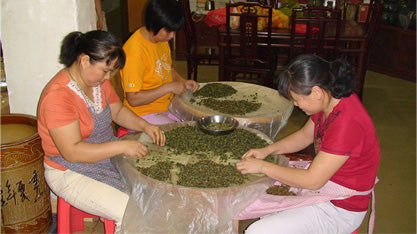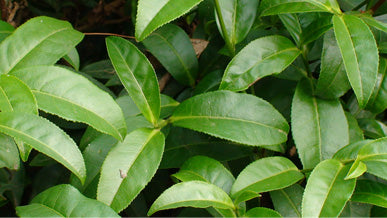- No products in the cart.
History of Tea
Tea is known to be rich in aroma, have a bold embodiment of flavours and hold a beautiful charm that dates back several centuries in a more ancient world. Although there are no records of the very origins of tea, there are many stories that can be traced back to China, India and areas throughout Southeast Asia. One of the most widely accepted origins comes from the Yunnan province in China, where it's said the oldest tea tree that was cultivated over 3000 years ago still exists.

Tea drinking progressed through time and defined some of the most ancient cultures of the world. During the reign of Emperor Shen Nong in 2737 B.C., his high esteem towards medicinal plants instilled the use of herbal medicines unto his people. From early on, the act of drinking tea and all of its healing properties became an integral part of the lives of those who were ruled by Emperor Shen Nong and have continued to this day.

During the Western Zhou Dynasty, tea became a significant religious offering, while the Han Dynasty (220 AD) restricted tea as a beverage solely for the use by the royal clan and those belonging to the elite groups. It was during the Tang Dynasty (618 AD) when the Chinese government promoted tea growth and enjoyment for everyone. It was during this time, tea production and tea shops became a thriving industry, and it's in this time that Japanese priests who were studying in China took the tea back to their homeland. In the beginning, tea was solely enjoyed by the upper class and Japanese priests drank tea simply as a means to help them stay awake during meditation.

Tea was first imported to Britain in 1660 with the marriage of the Portuguese princess Catherine of Braganza and England's King Charles II. The Queen started the habit of drinking tea which quickly gained in popularity. Once the East India Company began regular trade of tea with China, the famous drink became a staple in British society, which is still greatly evident today. The first tea shipment to arrive in Canada was imported by the Hudson Bay Company in 1716 and it took more than a year to arrive. Tea caught on with Canadians and was quite popular in teabags and available in almost all grocery stores. Loose tea was less popular and mostly purchased by immigrants to Canada where they had consumed it in their home countries. Over time there was a trend to go for the 'easier to use' teabag and this continued up until about 15 years ago when independent little teashops opened around the country.Loose tea has grown in popularity and is now considered fashionable to use, albeit a bit intimidating. As much as tea is consumed in Canada it is still misunderstood although there is great interest in learning more about its benefits an unique enjoyment. I remember my immigrant Scottish mother starting with loose tea and then succumbing to the 'bottom shelf teabag'. How I wished she were here now so we could sit back, reminisce and enjoy an excellent cup of 'real tea', one of life’s truly enjoyable treasures.
We ship across continental North America and as far as Kelowna BC. We are happy to ship our fresh flavourful teas and tisanes as well as unique tea accessories as far as Kelowna BC and across all of Canada. Please view our products online at www.shop.distinctlytea.com.

